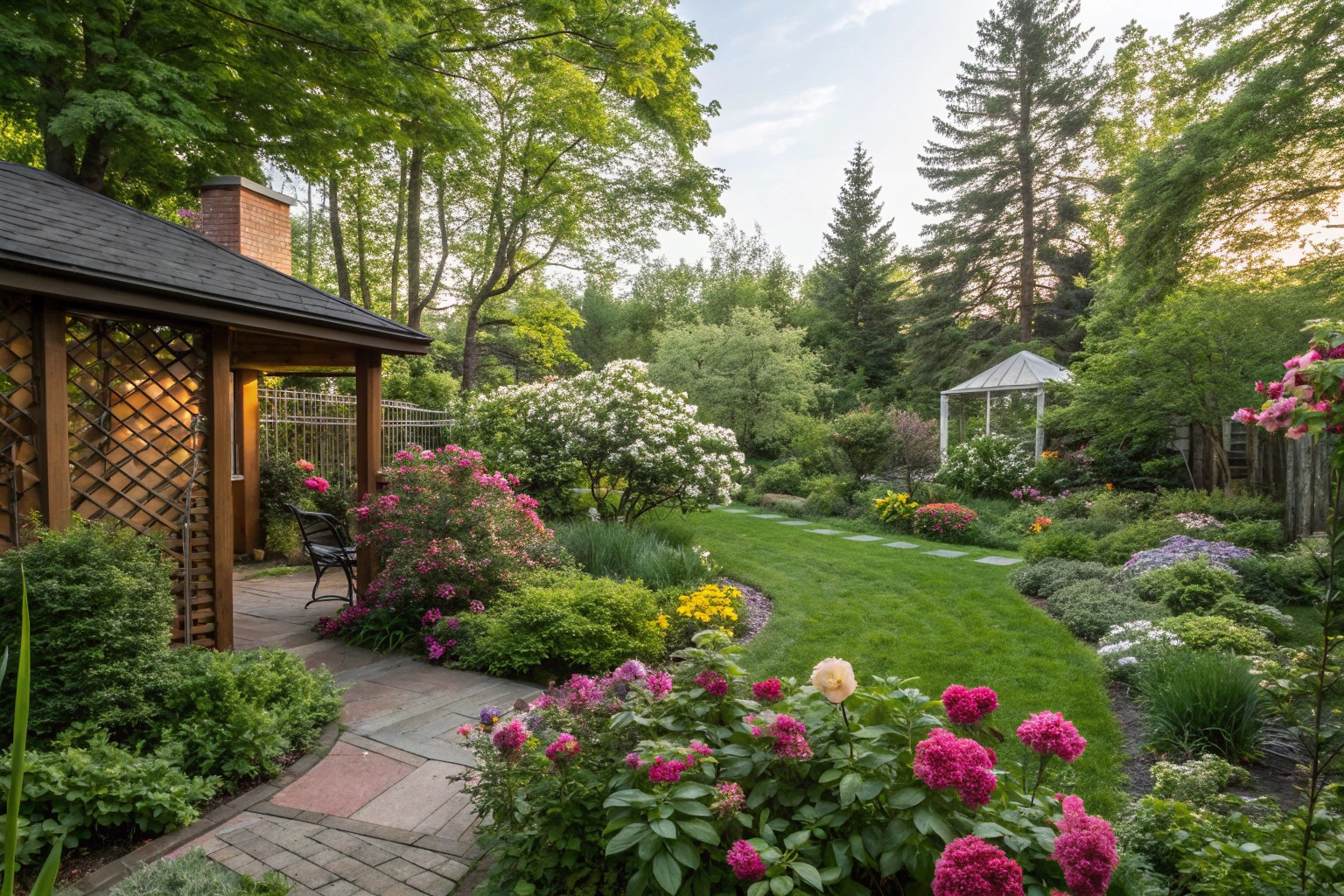When designing outdoor spaces, the principles of sustainability have become not just a preference but a necessity. As our climate changes and resources become more precious, embracing sustainable gardening practices allows us to create beautiful landscapes that work in harmony with nature rather than against it. This comprehensive guide explores how to transform your outdoor spaces into thriving, resilient ecosystems that benefit both people and the planet.
Understanding Sustainable Landscape Design
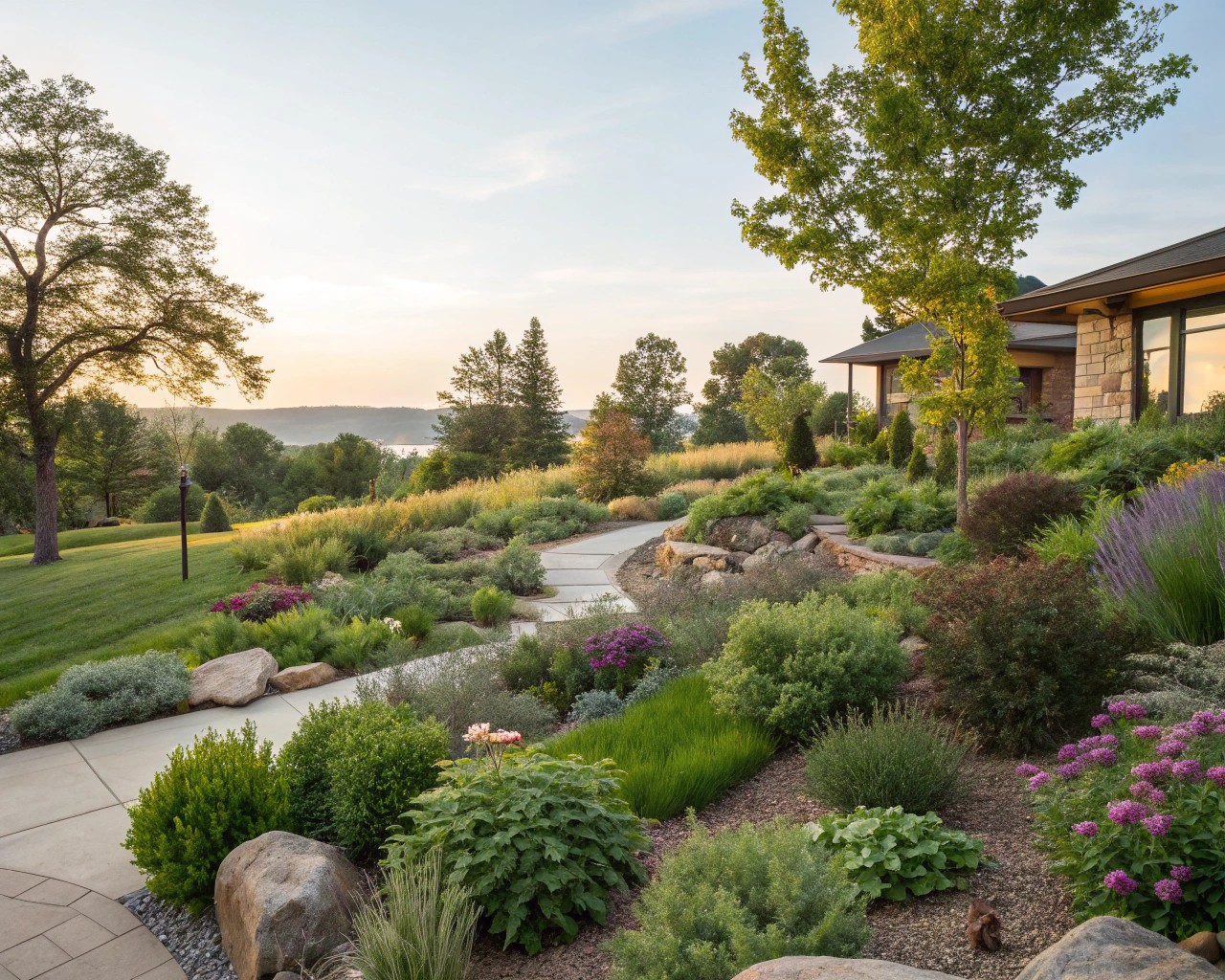
Sustainable landscape design focuses on creating outdoor environments that conserve resources, support local ecosystems, and require minimal maintenance while still providing beauty and functionality. At its core, this approach aims to mimic natural systems while meeting human needs.
The Principles of Sustainable Gardening
Sustainable gardening works in harmony with nature by minimizing negative environmental impacts and maximizing positive ones. The process involves thoughtful plant selection, water conservation, soil management, and reduced chemical use. When designed properly, sustainable landscapes become self-sufficient ecosystems that thrive with minimal intervention.
Several key principles guide sustainable landscape design:
- Resource Conservation: Using materials and methods that minimize resource consumption
- Biodiversity Support: Creating habitats for local wildlife and pollinators
- Water Efficiency: Designing systems that maximize water conservation
- Soil Health: Building and maintaining healthy soil ecosystems
- Reduced Chemical Use: Eliminating or minimizing synthetic fertilizers and pesticides
- Local Adaptation: Working with your specific climate and conditions
Benefits of Sustainable Landscaping
The benefits of sustainable landscaping extend beyond environmental impacts. Let’s examine the advantages from multiple perspectives:
| Benefit Category | Key Advantages |
|---|---|
| Environmental | Carbon sequestration, biodiversity support, reduced pollution, water conservation |
| Economic | Lower maintenance costs, reduced water bills, decreased need for fertilizers and pesticides |
| Social | Improved mental health, community connection, educational opportunities |
| Property | Increased property value, extended landscape longevity, reduced long-term costs |
Site Assessment and Planning
Every successful sustainable landscape begins with a thorough site assessment. Walking the property at different times of day reveals sun patterns, drainage issues, and existing natural features worth preserving.
Understanding Your Site’s Microclimate
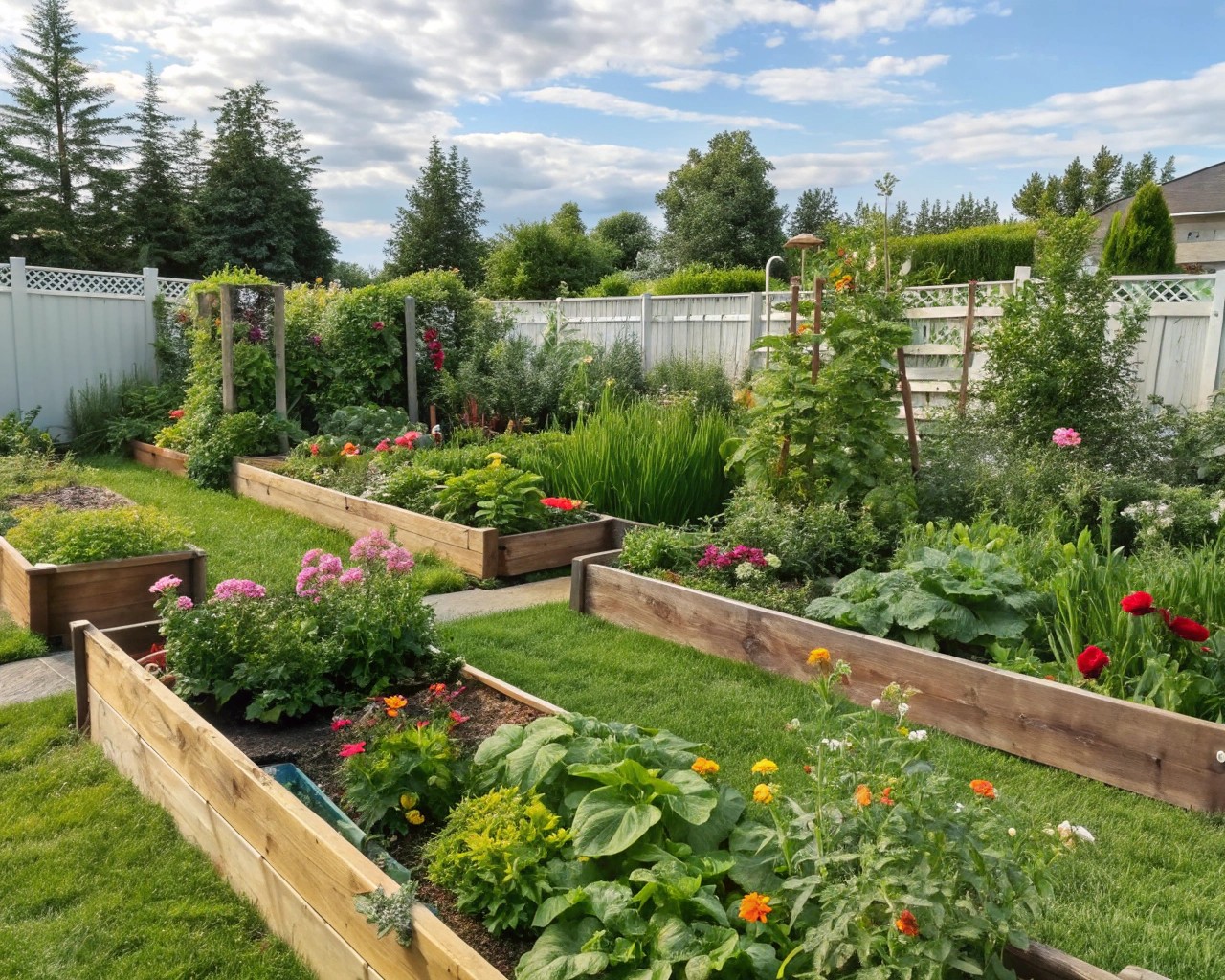
American landscapes vary dramatically across regions, but even within a single property, microclimates exist. The south-facing side of your home may support different plants than the north-facing side. Identifying these variations allows for strategic plant placement that maximizes success and minimizes resource use.
When assessing your site, consider:
- Soil type and quality
- Sun exposure patterns
- Water sources and drainage
- Existing vegetation
- Wildlife presence
- Topography and slopes
Choosing Native and Adapted Plants
Native plants form the foundation of sustainable landscapes. These plants have adapted to local conditions over thousands of years, making them inherently suited to thrive with minimal intervention.
The Power of Native Plants
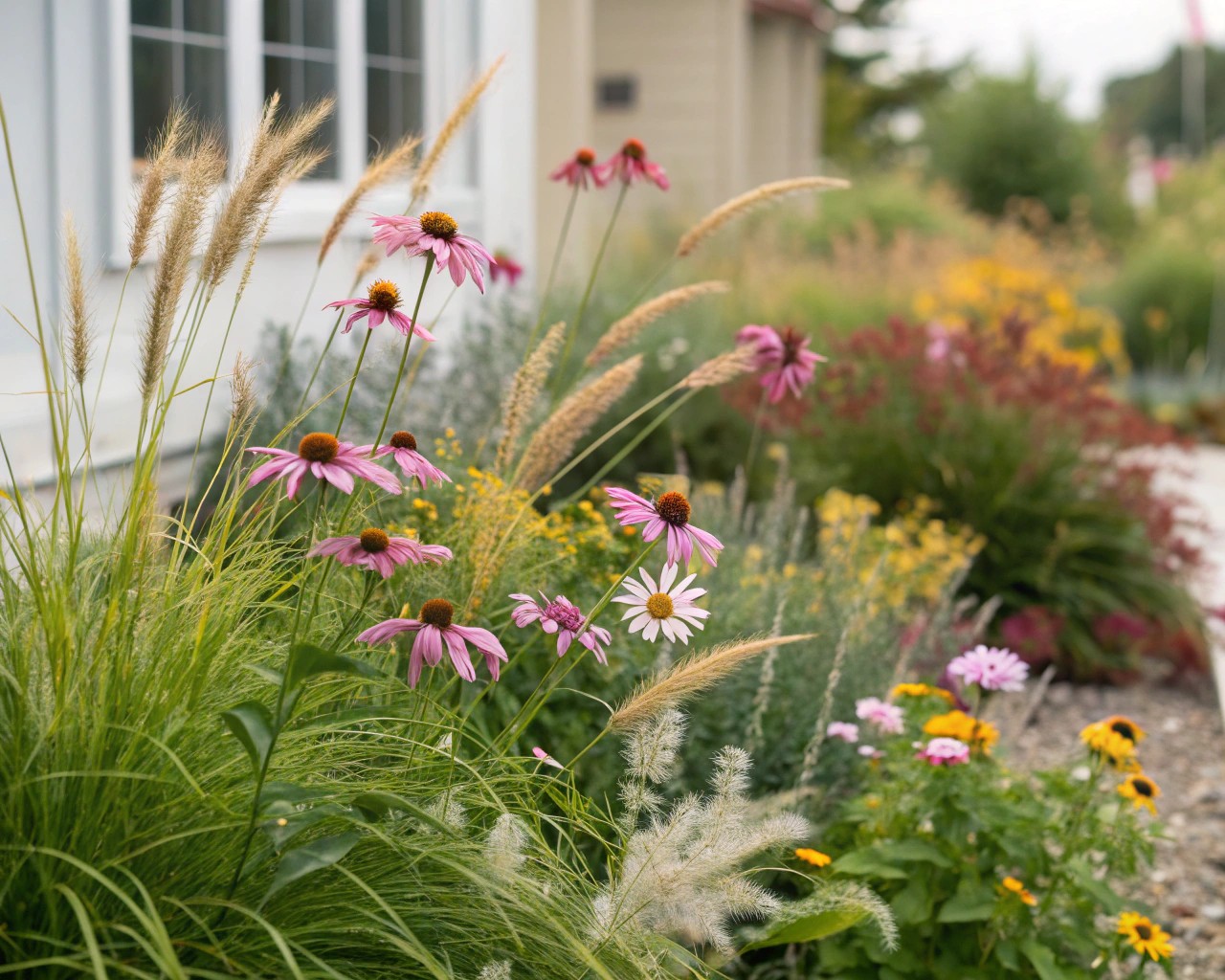
Native plants offer numerous advantages:
- Adapted to local climate and soil conditions
- Require less water, fertilizer, and pesticides
- Provide vital habitat and food for local wildlife
- Support specialist insects that have evolved alongside them
- Contribute to regional character and sense of place
When selecting native plants, research those specific to your region rather than those simply native to North America. This specificity ensures plants truly adapted to your local conditions.
Creating Plant Communities
Sustainable landscapes work best when plants are grouped as communities rather than isolated specimens. By mimicking natural plant groupings, these communities develop beneficial relationships that strengthen the entire garden. For example, tall plants can shade more delicate species, while deep-rooted plants can break up compacted soil for their neighbors.
Soil Health Management
The foundation of any sustainable garden lies beneath the surface. Healthy soil supports plant growth, manages water effectively, and sequesters carbon.
Building Living Soil
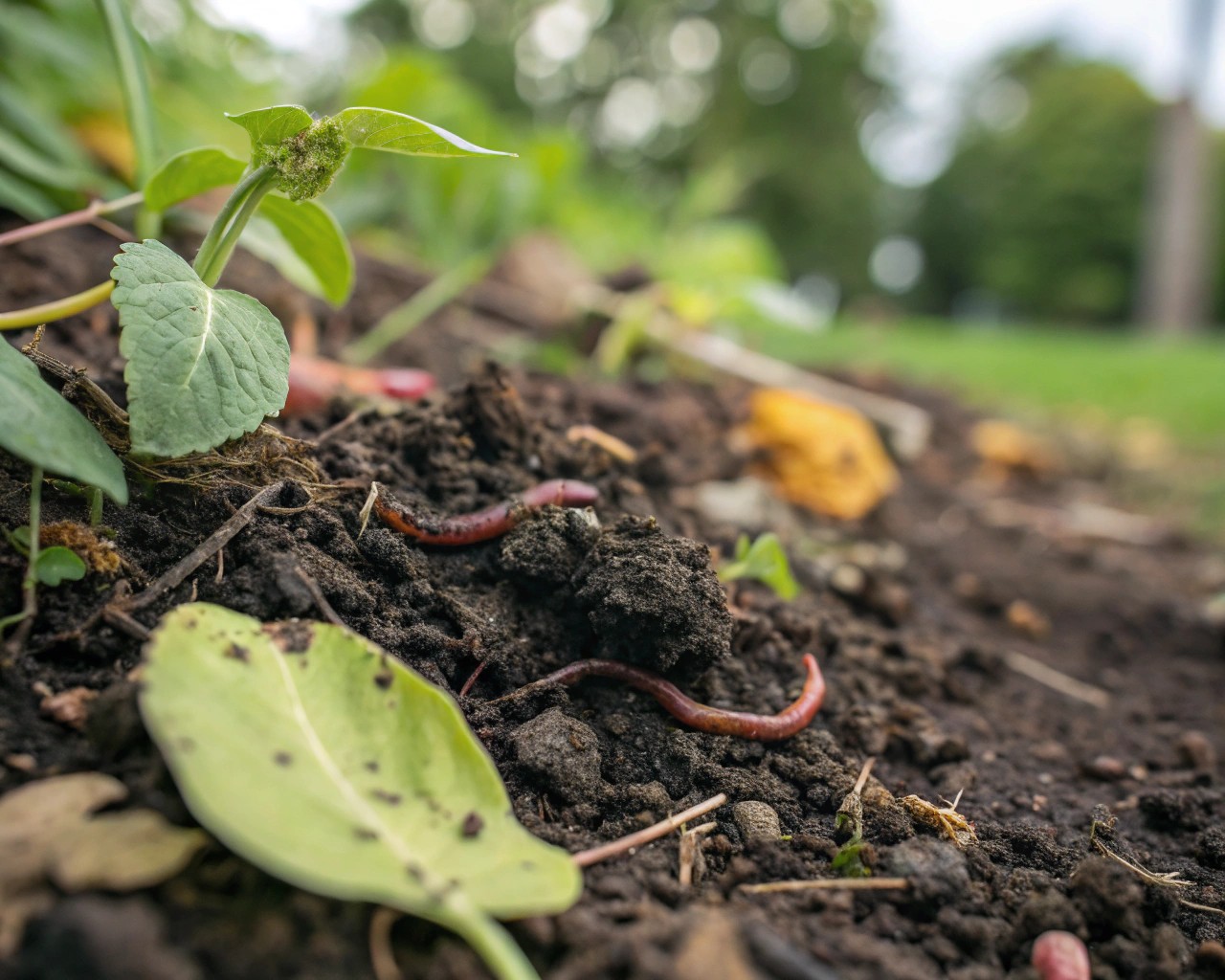
Conventional gardening often focuses on feeding plants, while sustainable gardening emphasizes feeding the soil. A teaspoon of healthy soil contains billions of microorganisms that support plant health in ways synthetic fertilizers cannot.
Several practices build and maintain soil health:
- Composting: Turn kitchen scraps and yard waste into rich organic matter
- Mulching: Apply organic mulch to retain moisture and slowly feed soil organisms
- Reduced Tillage: Minimize soil disturbance to protect soil structure
- Cover Cropping: Plant beneficial plants during off-seasons to protect and nourish soil
- Avoiding Compaction: Create designated pathways to prevent soil compression
Water Conservation Strategies
Water management represents one of the most critical aspects of sustainable landscaping, particularly in drought-prone regions across America.
Smart Water Management
Effective water conservation approaches include:
- Rainwater Harvesting: Install rain barrels or cisterns to collect roof runoff
- Drip Irrigation: Use targeted watering systems that minimize waste
- Rain Gardens: Create planted depressions that capture and filter runoff
- Proper Timing: Water deeply and infrequently to encourage deep root growth
- Grouping Plants: Arrange plants with similar water needs together in hydrozones
For established gardens, consider applying a granular soil wetter to improve absorption. Water deeply every 3-5 days rather than daily to encourage robust root development.
Sustainable Hardscaping Materials
Hardscaping elements like paths, patios, and walls play important roles in sustainable landscapes. The materials chosen can significantly impact the environmental footprint of your garden.
Eco-Friendly Material Options
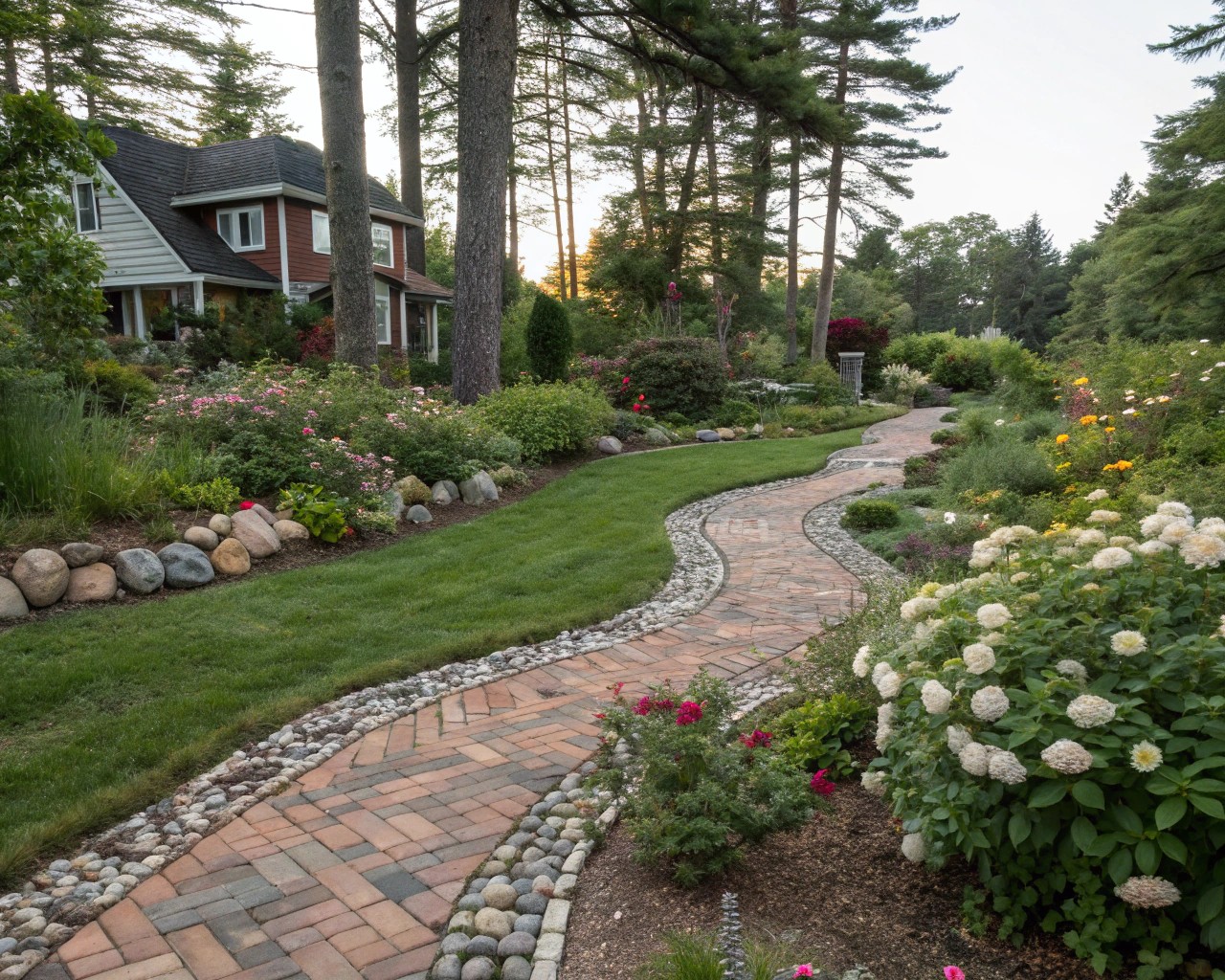
When selecting materials for hardscaping, consider:
- Permeable Surfaces: Allow water to infiltrate rather than run off
- Reclaimed Materials: Repurpose brick, stone, or wood from other projects
- Local Sources: Reduce transportation impacts by using locally available materials
- Durability: Choose materials that will last decades with minimal maintenance
- End-of-Life: Consider what will happen when materials eventually need replacement
Reducing Chemical Inputs
Sustainable landscapes thrive without synthetic chemicals that can harm beneficial organisms and disrupt ecological balance.
Natural Pest Management
Instead of reaching for chemical pesticides, consider:
- Beneficial Insects: Attract natural predators like ladybugs and lacewings
- Physical Barriers: Use row covers and netting to protect vulnerable plants
- Companion Planting: Grow plants that naturally repel pests
- Healthy Soil: Well-nourished plants better resist pest pressure
- Acceptability Thresholds: Tolerate some level of damage as part of a natural ecosystem
Creating Wildlife Habitat
Sustainable landscapes serve multiple species, not just humans. Creating habitat for wildlife enriches the garden ecosystem and provides natural pest control.
Supporting Biodiversity
To enhance wildlife support:
- Layered Vegetation: Include ground covers, shrubs, and trees
- Water Sources: Provide bird baths or small ponds
- Shelter: Include rock piles, brush piles, or nesting boxes
- Continuous Blooming: Ensure something is flowering throughout the growing season
- Nighttime Considerations: Minimize light pollution that disrupts wildlife behavior
Maintenance Practices for Sustainable Landscapes
Sustainable gardens require different maintenance approaches than conventional landscapes. While they typically need less intervention overall, they benefit from thoughtful care.
Seasonal Maintenance Calendar
A sustainable garden’s maintenance needs change with the seasons:
| Season | Key Maintenance Tasks |
|---|---|
| Spring | Add thin layer of compost, divide spreading plants, monitor for early pests |
| Summer | Deep watering when needed, light pruning, harvest seeds from early bloomers |
| Fall | Leave seed heads for birds, selective cutting back, light mulching of bare areas |
| Winter | Minimal disturbance, planning for next season, maintaining habitat areas |
Lawn Alternatives
Traditional lawns consume significant resources. Consider reducing lawn areas by:
- Native Meadows: Convert portions to low-maintenance native grasses and wildflowers
- Groundcover Plants: Replace grass with spreading perennials in low-traffic areas
- Functional Spaces: Create defined areas for activities while letting the rest go natural
- Edible Landscaping: Replace ornamental plants with productive food crops
Implementing Sustainable Practices
Making the transition to sustainable landscaping doesn’t require starting from scratch. Small, incremental changes can transform an existing landscape over time.
Starting Small
Begin with manageable projects:
- Convert one small bed to native plants
- Install a rain barrel
- Start a compost system
- Remove invasive species
- Reduce one section of lawn
As confidence grows, expand these approaches throughout the landscape. Each small change contributes to a more sustainable whole.

